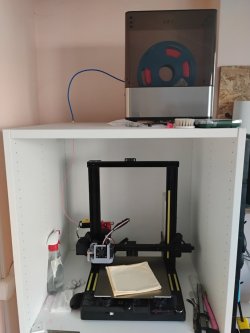Now if they'd only do the same for their firmwareElegoo have announced they're open-sourcing the RFID tag system they're using on the upcoming filament switcher for the Centauri Carbon.

ELEGOO RFID Ecosystem Feedback Solicitation
With the development of the ELEGOO Automatic Filament Switching System, which is highly anticipated by users, we have ushered in a new era of intelligent filament management. During the R&D process, one core feature has demonstrated immense potential—not only enabling automatic filament...www.elegoo.com

GitHub - ELEGOO-3D/ELEGOO-RFID-Tag-Guide: This document details the data structure and content format to be used on RFID tags for ELEGOO's FDM 3D printing filament spools.
This document details the data structure and content format to be used on RFID tags for ELEGOO's FDM 3D printing filament spools. - ELEGOO-3D/ELEGOO-RFID-Tag-Guidegithub.com








 .
.
 .
. 
